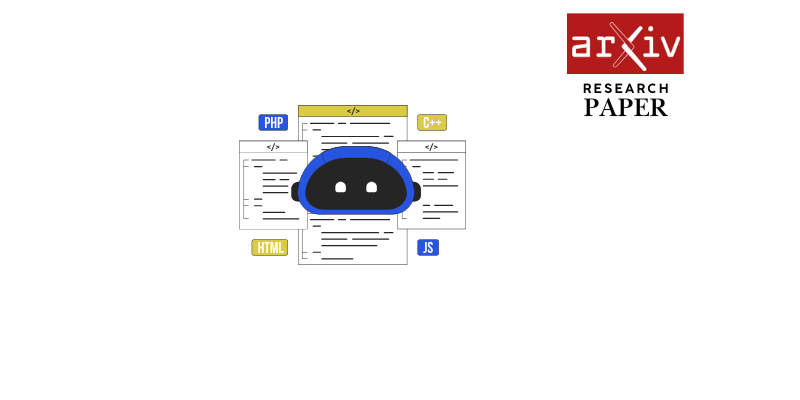Page 1:
HEISIR: Hierarchical Expansion of Inverted Semantic Indexing for
Training-free Retrieval of Conversational Data using LLMs
Sangyeop Kim†1,2, Hangyeul Lee2, Yohan Lee1
1Coxwave
2Seoul National University
sangyeop.kim@coxwave.com, mikelee@snu.ac.kr, yohan.lee@coxwave.com
Abstract
The growth of conversational AI services has
increased demand for effective information re-
trieval from dialogue data. However, existing
methods often face challenges in capturing
semantic intent or require extensive labeling
and fine-tuning. This paper introduces HEISIR
(Hierarchical Expansion of Inverted Seman-
tic Indexing for Retrieval), a novel frame-
work that enhances semantic understanding
in conversational data retrieval through op-
timized data ingestion, eliminating the need
for resource-intensive labeling or model adap-
tation. HEISIR implements a two-step pro-
cess: (1) Hierarchical Triplets Formulation and
(2) Adjunct Augmentation, creating seman-
tic indices consisting of Subject-Verb-Object-
Adjunct (SVOA) quadruplets. This structured
representation effectively captures the underly-
ing semantic information from dialogue con-
tent. HEISIR achieves high retrieval perfor-
mance while maintaining low latency during
the actual retrieval process. Our experimental
results demonstrate that HEISIR outperforms
fine-tuned models across various embedding
types and language models. Beyond improv-
ing retrieval capabilities, HEISIR also offers
opportunities for intent and topic analysis in
conversational data, providing a versatile solu-
tion for dialogue systems.
1 Introduction
Conversational AI is being deployed across diverse
industries, including personalized services (Koca-
balli et al., 2019), code generation (Li et al., 2022),
educational tutoring (Mousavinasab et al., 2021)
and even in social welfare services (Jo et al., 2023).
This rapid expansion has resulted in vast amounts
of dialogue data, rich with insights into user needs
and behavioral patterns. To harness this wealth of
information, Information Retrieval approach tai-
lored to the unique characteristics of conversational
†Corresponding author.data is necessary. We define this area as Conversa-
tional Data Retrieval (CDR), which aims to enable
efficient access to and extraction of relevant infor-
mation from large-scale conversational data.
CDR is highly important for both end-users
and conversational AI service providers. End-users
frequently need to retrieve specific information
from past conversations, such as previous agree-
ments or discussion outcomes, using natural lan-
guage queries. Service providers can utilize CDR
to analyze user interactions and enhance their AI-
powered services. For example, CDR can enhance
Retrieval Augmented Generation (RAG) systems
by providing relevant dialogue examples (Lewis
et al., 2020; Wang et al., 2024), and support ser-
vice improvement by identifying patterns in user
behavior and recurring topics (Motger et al., 2022;
Owoicho et al., 2022).
However, conventional sparse and dense retrieval
methods exhibit limited performance when applied
to conversational data. Unlike traditional document
data, conversational data has distinct characteristics
that make traditional retrieval approaches insuffi-
cient. First, each utterance is assigned to a specific
speaker, meaning that the same message can be
expressed in entirely different ways depending on
who is speaking. Additionally, a speaker’s inten-
tion can be multifaceted; a single utterance may
have multiple, often complex, intents in it. Further-
more, the meaning of utterances depends heavily
on the context of the dialogue and the relationship
between participants, often without explicit con-
textual markers. These unique characteristics pose
significant challenges that existing context-aware
retrieval models, trained primarily on document-
based QA tasks (Yang et al., 2015; Rajpurkar et al.,
2016; Nguyen et al., 2016), struggle to address.
Apart from the limited effectiveness of existing
retrieval methods on conversational data, the struc-
ture of the retrieval system itself poses a significant
challenge to practical implementation. A typical re-
1arXiv:2503.04141v1 [cs.IR] 6 Mar 2025
Page 2:
Figure 1: Architecture of HEISIR framework: Data Ingestion Phase
trieval system consists of two main phases (Wang
et al., 2021): the data ingestion phase, where in-
coming data is processed and indexed offline, and
the retrieval phase, where relevant information is
searched based on user queries. Recent research
on retrieval system leverages the powerful context
understanding capability of LLMs through tech-
niques such as re-ranking (Zhang et al., 2023),
query rewriting (Yu et al., 2020), and using larger
retrieval models (Ma et al., 2023; Peng et al., 2023).
However, these approaches, especially when incor-
porating LLMs, introduce significant latency trade-
off in the retrieval phase, making them impractical
for real-time services.
Building on these insights, we propose a novel
framework that extracts and processes the inverted
semantic indices in the data ingestion phase, unlike
traditional approaches that process indices in the
retrieval phase. HEISIR (Hierarchical Expansion
ofInverted Semantic Indexing for Retrieval) imple-
ments structured semantic indices that capture the
inherent syntactic hierarchy within sentences. Over-
all scheme of our framework is detailed in Figure
1. HEISIR constructs search indices based on the
inherent syntax present in all natural language sen-
tences, eliminating the need for extensive labeling
and training. In data ingestion phase, HEISIR ex-
tracts semantic indices and stores them as inverted
indices . In retrieval phase, HEISIR computes score
to retrieve the most relevant conversations. Our ap-
proach not only enhances retrieval performance but
also offers practical advantages, as it eliminates
latency during the retrieval phase. The key contri-
butions of this research are:1.Improved retrieval performance signifi-
cantly enhances retrieval capabilities with only
negligible increase of latency by optimizing
data ingestion.
2.Practical real-world applicability enables
deployment of effective dialogue retrieval sys-
tems in production environments lacking la-
beled training data.
3.Practical-scale Robustness consistently en-
hances performance when integrated with any
combination of language model scales.
4.Versatility beyond retrieval provides highly
interpretable atomic semantic units, enabling
intuitive intent and topic analysis.
2 Linguistic Preliminaries
To design semantic indices for CDR, it is necessary
to identify two fundamental components in a mes-
sage: the speaker and the intent. These components
correspond to the subject and the verb of a sentence.
To capture complex intents while maintaining the
structural integrity, HEISIR follows the syntactic
comprehension process of humans.
Numerous studies support the view that hu-
mans comprehend sentences incrementally. Specif-
ically, sentences are processed by first construct-
ing the simplest syntactic structure and then in-
tegrating semantic adjuncts to achieve full un-
derstanding (Kamide et al., 2003; Altmann and
Mirkovi ´c, 2009; Fossum and Levy, 2012). Phrase
Structure Grammar (PSG) (Chomsky, 2002;
Gazdar, 1985) is one of the most widely used
models to explain this top-down syntactic pro-
cessing. PSG breaks down natural language sen-
2
Page 3:
tences into constituents —syntactically significant
units—organized in a hierarchical binary tree struc-
ture. The overall scheme of how PSG parses mes-
sages for HEISIR is detailed in Figure 2.
Figure 2: Phrase Structure Grammar and Constituents
Another key concept central to syntactic pro-
cessing is verb valency . Verb valency refers to the
number of arguments that a verb can take in a sen-
tence, and it describes the relationship between the
verb and other elements in the clause, such as the
subject, direct object, and indirect object. Verbs
can be categorized based on their valency as ava-
lent (taking no arguments), monovalent (taking
one argument), divalent (taking two arguments),
ortrivalent (taking three arguments). Verb valency
plays a critical role in determining the constituent
hierarchy in sentences, as different valency types
lead to different phrase structures.
In this study, we develop a semantic indexing
framework according to hierarchical syntactic pro-
cessing schemes that represent the three most com-
mon types of verb valency: monovalent, divalent,
and trivalent. We parse the constituents from sen-
tences as follows:
•Subject : The entity performing the action or
the one that the sentence is about.
•Verb : The action or state described in the sen-
tence.
•Object : The entity directly affected by the
verb’s action.
•Adjunct : An optional or necessary element
that provides additional information about the
action, such as time, place, or manner.
HEISIR borrows these concepts from syntax,
but uses them in a slightly different context. For in-
stance, HEISIR fixes the Subject to the speaker ofutterance, to perform information retrieval in con-
versational data. Therefore, avalent verbs are disre-
garded due to the existence of an explicit subject.
This makes index tuples include at least two con-
stituents: the Subject and the Verb . Furthermore,
we use the word Adjunct in a slightly broader con-
text than is conventional; For divalent verbs that
take two objects, it is syntactically correct to al-
locate both direct and indirect objects under the
Object constituent. Instead, we include indirect
object into the Adjunct category for structural in-
tegrity and better search performance.
3 Hierarchical Expansion of Inverted
Semantic Indexing for Retrieval
Figure 3: 2-Step Expansion Process of HEISIR
HEISIR is a novel conversational data retrieval
framework that incorporates incremental syntactic
processing with inverted indexing. The framework
invests resources in the data ingestion phase, allow-
ing for optimized performance during the retrieval
phase without sacrificing latency.
Figure 3 outlines two key steps of the HEISIR
framework: (1) Hierarchical Triplets Formula-
tion, identifying the fundamental syntactic con-
stituents – subject, verb, and object – forming the
core structures of the sentence; (2) Adjunct Expan-
sion, expanding SVO triplets to SVOA quadruplets,
where A represents an Adjunct.
While a single-step approach for SVOA quadru-
plet extraction may seem straightforward, it has
critical limitations in accuracy and control. For
example, it generates redundant variations like
“teaches kids at kindergarten” and “teaches chil-
dren in kindergarten” that carry the same meaning,
introducing unnecessary index noise.
In contrast, HEISIR’s two-step approach first
extracts core SVO triplets and then carefully adds
adjuncts, effectively preventing redundancy while
3
Page 4:
maintaining high-quality indices. Furthermore, the
experimental results supporting this analysis are
presented in Section 6.2. The detailed prompts used
in our approach can be found in Appendix A.
3.1 Data Ingestion Phase
Step 1: Hierarchical Triplets Formulation In
this step, HEISIR breaks down sentences into one
or more SVO triplets . These triplets capture the
core syntactic hierarchy within the dialogue con-
tent, addressing two key limitations of traditional
embedding methods (Mikolov, 2013; Pennington
et al., 2014). First, HEISIR reduces ambiguity in
the embeddings of complex sentences. HEISIR de-
composes messages into multiple SVO triplets, sig-
nificantly reducing sentence complexity. Addition-
ally, HEISIR strictly excludes pronouns to ensure
semantic completeness in each index. Second, our
approach minimizes the impact of non-semantic
elements on performance. As discussed in sec-
tion 2, HEISIR fixes the subject to the speaker
of the message to enhance retrieval performance.
During this syntactic transformation, avalent verbs
are transformed into their mono-, di-, or trivalent
equivalents, and all tenses, auxiliaries, and syn-
tactic markers are removed. This process refines
HEISIR-generated triplets to capture only semanti-
cally significant elements of the message.
Step 2: Adjunct Augmentation SVO triplet in-
dices extracted in step 1 identify hierarchical struc-
tures in the message. To enhance specificity, we
introduce a Adjunct Augmentation process. We cat-
egorize four distinct patterns of adjuncts:
-Detailed Content and Theme of Discussion
specifies the target of communication or conver-
sational themes using prepositions.
-Reason or Causation explains the underlying
causes or reasons for actions or situations, ad-
dressing the "why" of a scenario.
-Condition or Accompanying Circumstance de-
scribes the context or conditions under which
actions occur or situations exist.
-No information indicates cases where adding
detailed information is impossible or not mean-
ingful for the given sentence structure.
Following this step, each message in a conver-
sation is encoded into one or more SVOA quadru-
plets. These SVOA quadruplets break down com-
plex messages into comprehensible semantic units.
The indices are then stored in an inverted indexstructure, which facilitates efficient retrieval in the
subsequent phase.
3.2 Retrieval Phase: Scoring
After deriving SVOA quadruplets from a conversa-
tion, we devise a method to collectively evaluate
embeddings of five conversational components —
conversation, message, SV , SVO, SVOA — in a
single score metric.
To formalize our scoring method, we represent
queries and conversations with embeddings Eqand
Econvrespectively, while other conversational com-
ponents C={message, SV , SVO, SVOA }are en-
coded as Ec. The relevance between components is
computed using a vector similarity function f(·,·).
The scoring process is defined as follows:
Sconv=f(Eq, Econv) (1)
Sc= max
Ecmf(Eq, Ecm)forc∈C
where Ecm∈Ec(m), m∈conv(2)
SHEISIR =Sconv+X
c∈CSc (3)
Equation (1) measures the semantic similarity
between the query and the entire conversation con-
tent to capture conversation-level relevance. Com-
ponent scores are computed as shown in (2), where
we evaluate each type separately by finding the
highest similarity between the query and compo-
nent instances within the conversation. For each
conversational component c∈C,Ecmdenotes
a set of embeddings of component cin the mes-
sagem, and maxEcmpicks best from multiple
<component, message> pairs. Finally, the overall
HEISIR score in (3) is determined by aggregating
the conversation-level similarity with individual
component scores to provide a comprehensive mea-
sure of relevance.
Potential alternatives of maximization function
in (2) are summation and averaging. However, we
employ maximization instead of these alternatives
since summation and averaging introduce noise
from less relevant messages, whereas focusing on
the most salient component is intuitively more ef-
fective.
4 Experiment
4.1 Dataset
We select five dialogue datasets addressing key top-
ics in conversational data analysis: profanity detec-
4
Page 5:
tion, user satisfaction evaluation, and personal in-
formation protection. We extract queries from five
datasets and map them to corresponding conversa-
tion sessions. The statistics of the derived dataset
is detailed in Table 1.
-BAD (Xu et al., 2021) focuses on improving
safety of conversational agents.
-DICES (Aroyo et al., 2024) evaluates safety of
AI responses in diverse contexts.
-Daily Dialog (Li et al., 2017) provides labeled
multi-turn dialogues reflecting user sentiments.
-PILD (Xu et al., 2020) detects and protects sen-
sitive personal information.
-USS (Sun et al., 2021) simulates user satisfaction
in task-oriented dialogue systems.
Dataset Conv. QueryUtterances
per Conv.Mapped Conv.
per Query
Train4,0963,00012.315.5
Validation 590 14.9
Test 4,035 3,501 12.7 15.4
Table 1: Statistics of Dataset
4.2 Baseline
For the evaluation of Information Retrieval, we
compare the following baseline models:
-DPR (Karpukhin et al., 2020): Learns dense em-
beddings for queries and passages using a dual-
encoder architecture for efficient retrieval.
-SPLADE-v3 (Lassance et al., 2024): Employs
sparse lexical representations for expansion-
based retrieval, enhancing earlier SPLADE ver-
sions (Formal et al., 2021).
-LLM2Vec (BehnamGhader et al., 2024): Creates
dense vector representations of text using large
language models to facilitate retrieval tasks.
For training-free models, we utilize the follow-
ing in our comparison:
-CoT Expansion (Jagerman et al., 2023): Ex-
pands queries using CoT prompting and uses
both original and expanded queries for retrieval.
-HyDE (Gao et al., 2022a): Generates hypotheti-
cal relevant documents using an LLM to enhance
retrieval performance.
-LameR (Shen et al., 2023a): Produces hypotheti-cal documents using BM25 initial results to im-
prove retrieval effectiveness.
4.3 Experimental Setup
For context consideration, we set a window of k=
2previous messages. We set LLMs temperature
to 0.0, and use cosine similarity for embedding
comparisons. All implementation details, including
the versions of the embedding models and LLMs
used, can be found in Appendix D.
Embedding for HEISIR For this study, We
select embedding models based on their perfor-
mance in the MTEB benchmark (Muennighoff
et al., 2022). We explore Encoder-only models
with extended context capabilities, such as GTE
(Li et al., 2023) and Nomic (Nussbaum et al.,
2024). Another category of embedding models
is decoder-only models based on LLMs. Specif-
ically, we utilize LLM2Vec (BehnamGhader et al.,
2024) with its LLama-3 (AI@Meta, 2024) based
version. Additionally, we use NV-Embed (Lee et al.,
2024), which currently achieves the highest aver-
age MTEB benchmark score. For comprehensive
evaluation, We employ latest OpenAI-small and
large embedding models (OpenAI, 2024).
LLMs for HEISIR The study uses a range of
LLM models for different computational envi-
ronments. For low-resource settings, we assess
Gemma (2B) (Team et al., 2024), Phi-3 (mini, 3.8B)
(Abdin et al., 2024), LLama-3 (8B) (AI@Meta,
2024), and Qwen-2 (7B) (Qwen, 2024), which are
suitable for environments with limited hardware.
We also test API-based models including GPT-3.5-
turbo (OpenAI, 2023) and Claude 3 Haiku (An-
thropic, 2024).
5 Result
5.1 Baseline Result
Type Model acc@1 ndcg@5 ndcg@10 ndcg@20
BaselineDPR 0.0337 0.0274 0.0257 0.0283
SPLADE-v3 0.2048 0.1696 0.1614 0.1743
LLM2Vec 0.2825 0.2225 0.2092 0.2220
Fine-tunedDPR 0.1708 0.1420 0.1342 0.1444
SPLADE-v3 0.2474 0.2015 0.1908 0.2034
LLM2Vec 0.3533 0.2881 0.2745 0.2912
HEISIRGPT-3.5-turbo0.4085 0.3260 0.3056 0.3198+ OpenAI-large
Table 2: Performance metrics of baseline, fine-tuned,
and best models
As shown in Table 2, models that typically excel
in general document retrieval struggle to achieve
5
Page 6:
ModelGTE (Encoder-only) LLM2Vec (Decoder-only) OpenAI-large (API)
acc@1 ndcg@5 ndcg@10 ndcg@20 acc@1 ndcg@5 ndcg@10 ndcg@20 acc@1 ndcg@5 ndcg@10 ndcg@20BasePre-trained 0.3156 0.2550 0.2394 0.2520 0.2825 0.2225 0.2092 0.2220 0.3425 0.2826 0.2670 0.2839
Fine-tuned 0.3708 0.2994 0.2823 0.2984 0.3533 0.2881 0.2745 0.2912 - - - -MiniGemma 0.3096 0.2562 0.2415 0.2541 0.3136 0.2597 0.2428 0.2543 0.3422 0.2733 0.2574 0.2705
Phi-3 0.3582 0.2934 0.2757 0.2901 0.3865 0.3138 0.2936 0.3055 0.3950 0.3192 0.2992 0.3136SmallLLama-3 0.3728 0.3005 0.2829 0.2958 0.3902 0.3155 0.2944 0.3073 0.4053 0.3263 0.3072 0.3207
Qwen-2 0.3613 0.2952 0.2786 0.2921 0.3879 0.3123 0.2912 0.3035 0.4045 0.3224 0.3026 0.3166APIGPT-3.5-turbo 0.3633 0.2943 0.2776 0.2930 0.3916 0.3140 0.2934 0.3068 0.4085 0.3260 0.3056 0.3198
Haiku 0.3716 0.2978 0.2809 0.2943 0.3927 0.3161 0.2958 0.3086 0.4056 0.3245 0.3028 0.3185
Table 3: Performance comparison of different models across Encoder-only (GTE), Decoder-only (LLM2Vec), and
API (OpenAI-large) approaches: Underlined values outperform the Fine-tuned model, bold values indicate the best
performing LLM model combination for each embedding model.
high performance in conversational data retrieval.
The LLM2Vec model (BehnamGhader et al., 2024),
which is based on a decoder-only architecture spe-
cialized for dialogue generation, outperforms other
models, indicating that embedding-based retrieval
methods are more effective for semantic search
in the context of conversational data. Fine-tuning
alone does not sufficiently address this issue, sug-
gesting the need for retrieval methods specifically
tailored to conversational data.
5.2 Main Result
In this section, we only discuss the best-performing
combinations of LLMs and embedding models. Re-
sults for all other combinations also show the ef-
fectiveness of HEISIR, with details available in
Appendix B.
Table 3 demonstrates the effectiveness of
HEISIR method in conversational data retrieval
across various model architectures and embedding
types. Our model, in combination with various
LLMs, outperforms all pre-trained encoder-only
and decoder-only baselines and API models, except
for when paired with Gemma. Notably, many of
these models even surpass the fine-tuned baselines,
highlighting the key strength of our method: achiev-
ing high performance without a need for resource-
intensive data labeling and training. These results
provide insights into optimal combinations for var-
ious constraints. OpenAI-large with GPT-3.5-turbo
achieve the highest overall performance. For en-
vironments prohibiting external APIs, LLama-3
+ LLM2Vec perform best, though other combina-
tions show comparable results, offering flexibility.
In resource-constrained settings, LLama-3 + GTE
provides an efficient balance of performance and
resource usage.Model acc@1 ndcg@5 ndcg@10 ndcg@20 Time (s)
BM25 0.1465 0.1233 0.1200 0.1299 0.0045
CoT Expansion 0.1225 0.0963 0.0894 0.0926 2.0059
HyDE 0.2702 0.2139 0.2026 0.2128 2.6192
LameR 0.2245 0.1853 0.1752 0.1866 3.5465
LLM2Vec 0.2825 0.2225 0.2092 0.2220 0.2091
HEISIR LLM2Vec 0.3902 0.3155 0.2944 0.3073 0.2778
OpenAI-large 0.3425 0.2826 0.2670 0.2839 0.5966
HEISIR OpenAI-large 0.4085 0.3260 0.3056 0.3198 0.7334
Table 4: Performance Comparison of Different Models
5.3 Practical Retrieval Efficiency
Table 4 demonstrates that HEISIR outperforms var-
ious training-free methods in both speed and accu-
racy. Methods that rely on LLMs for query expan-
sion during the search phase, such as CoT Expan-
sion (Jagerman et al., 2023), LameR (Shen et al.,
2023b), and HyDE (Gao et al., 2022b), require sig-
nificantly longer search times. In contrast, HEISIR
adds minimal time during retrieval phase (0.0687
seconds to LLM2Vec, 0.1367 seconds to OpenAI-
large) by requiring only simple score computation.
This efficiency is achieved by shifting the computa-
tional load to the data ingestion phase, which takes
3.86 seconds with GPT-3.5-turbo and 1.22 seconds
with LLama-3. These ingestion times are reason-
able considering they can be significantly reduced
through parallelization techniques. Additionally,
HEISIR is more cost-effective. While other meth-
ods incur costs per search, HEISIR only requires a
one-time data processing step during the data inges-
tion phase. As search frequency increases, HEISIR
remains economically efficient, whereas costs for
other methods continue to rise. LLM inference for
indexing incurs an additional cost of approximately
$0.00894 per conversation, based on the latest API
pricing.
An interesting trend was observed in the exper-
imental results: LameR, which is designed as an
6
Page 7:
improvement over HyDE, shows inferior perfor-
mance than HyDE. LameR integrates BM25 for
higher retrieval performance. This unexpected re-
sult suggests that while BM25 may be well-suited
for traditional document retrieval, it appears to hin-
der performance in conversational data retrieval.
6 Analysis
6.1 Interacting with Each Component
Figure 4: Marginal Performance of Components
Figure 4 shows the average performance across
all experimental settings. Each contour represents
a combination of the conversational components:
Conversation, Message, SV , SVO, SVOA. No-
tably, SVOA index embeddings outperforms ex-
isting retrieval methods that rely on conversation
and message embeddings. The best performance
is achieved when embeddings of all conversational
components are combined, demonstrating the ef-
fectiveness of HEISIR.
6.2 2-step index construction
The key strength of HEISIR lies in its 2-step SVOA
quadruplet extraction process. This approach offers
both qualitative and quantitative advantages over
single-step extraction methods. First, the 2-step
approach extracts SVOA quadruplets with greater
precision. The Hierarchical Triplet Formulation
step establishes the syntactic hierarchy within the
message, while the Adjunct Augmentation step
collects detailed information, simulating the incre-
mental sentence comprehension process of humans.
This method consistently produces higher-quality
SVOA quadruplets compared to single-step extrac-
tion. Second, quantitative evaluations show that
our 2-step approach consistently outperforms the
single-step method (Table 5).Model Metric
LLM embedding acc@1 ndcg@5 ndcg@10 ndcg@20
Phi-3GTE0.3530 0.2883 0.2724 0.2856
(-1.45%) (-1.74%) (-1.20%) (-1.55%)
LLM2Vec0.3405 0.2724 0.2559 0.2692
(-11.90%) (-13.19%) (-12.84%) (-11.88%)
OpenAI-large0.3879 0.3149 0.2970 0.3137
(-1.80%) (-1.35%) (-0.74%) (+0.03%)LLama-3GTE0.3513 0.2872 0.2713 0.2843
(-5.77%) (-4.43%) (-4.10%) (-3.89%)
LLM2Vec0.3362 0.2710 0.2544 0.2693
(-13.84%) (-14.11%) (-13.59%) (-12.37%)
OpenAI-large0.3865 0.3106 0.2957 0.3123
(-4.64%) (-4.81%) (-3.74%) (-2.62%)GPT-3.5-turboGTE0.3510 0.2844 0.2682 0.2823
(-3.39%) (-3.36%) (-3.39%) (-3.65%)
LLM2Vec0.3359 0.2696 0.2533 0.2673
(-14.22%) (-14.14%) (-13.67%) (-12.88%)
OpenAI-large0.3876 0.3126 0.2954 0.3111
(-5.12%) (-4.11%) (-3.34%) (-2.72%)
Table 5: Single-step Performance (% Indicates Perfor-
mance Change Compared to 2-step)
6.3 Exploring the effects of score ensembles
While our results confirm that combining the ex-
tracted semantic indices enhances retrieval perfor-
mance, this improvement can be claimed as a sim-
pleensemble effect . In this subsection, we com-
pare the ensemble effect with HEISIR. To measure
the ensemble effect, we combine scores from all
embedding models for the conversation and mes-
sage components, excluding the significantly un-
derperforming NV-Embed model (Lee et al., 2024)
to avoid underestimating the ensemble effect. For
comparison, we apply the HEISIR method to the
Phi-3 model (Abdin et al., 2024), which is the
smallest and least performant among our HEISIR
variants. As shown in Table 6, HEISIR outperforms
the ensemble effect, even in its least optimal setting.
This demonstrates that HEISIR adds value beyond
simple score aggregation.
combination acc@1 ndcg@5 ndcg@10 ndcg@20
ensemble effect 0.3445 0.2784 0.2651 0.2802
(- NV-Embed) 0.3522 0.286 0.2715 0.2887
HEISIR Phi-3,GTE 0.3582 0.2934 0.2757 0.2901
HEISIR Phi-3,LLM2Vec 0.3865 0.3138 0.2936 0.3055
HEISIR Phi-3,OpenAI-large 0.3950 0.3192 0.2992 0.3136
Table 6: Comparison of Ensemble Effects
6.4 Potential to Hybrid Search
In section 6.1, we observed that progressively
adding conversational components improved re-
trieval performance. Following this approach, we
7
Page 8:
experimented with the addition of keywords to de-
termine whether they enhance performance. Pre-
vious research on hybrid search methods report
promising performance improvements by incor-
porating keyword to semantic search (Kuzi et al.,
2020; Shen et al., 2023b). We explore addition of
BM25 score into various HEISIR settings, with
results shown in Table 7.
The performance results reveal interesting pat-
terns in the integration of BM25 (Robertson et al.,
1995) with various models. When combined with
weaker models like Gemma and NV-Embed, BM25
provided slight improvements. However, its integra-
tion with stronger models ( HEISIR others) led to per-
formance declines. This trend aligns with our pre-
vious observations in Section 5.3. These findings
suggest that BM25’s simplistic relevance estima-
tion may struggle to capture the complex semantic
relationships present in conversational contexts.
Model acc@1 acc@5 ndcg@10 ndcg@20
Only BM25 0.1465 0.3610 0.1200 0.1299
HEISIR Gemma, All-embeddings 0.3048 0.5919 0.2315 0.2430
+ BM25 score 0.3105 0.5939 0.2346 0.2465
HEISIR All-LLMs,NV-Embed 0.2806 0.5542 0.2107 0.2196
+ BM25 score 0.2912 0.5688 0.2189 0.2279
HEISIR others 0.3822 0.6849 0.2886 0.3020
+ BM25 score 0.3767 0.6791 0.2858 0.2997
Table 7: Metric Changes with and without BM25
6.5 Optimization of HEISIR through
weighted sum
HEISIR currently calculates the final score by
equally summing all component scores. However,
components may contribute differently to sentence
meaning and overall performance, suggesting po-
tential benefits from a weighted sum approach.
Our experiments using random search demon-
strate clear potential for performance improvement
through weight optimization, as shown in Table 8.
These weights can be further refined for specific
domains, potentially yielding even better results.
6.6 Applications of Semantic Indexing
Utilizing HEISIR for retrieval offers two key ad-
vantages beyond performance. First, it enhances
interpretability: the highest-scoring SVOA indices
provide structured, detailed insights into retrieval
results. Second, HEISIR enables easy and effective
result modification. Traditional retrieval systems of-
ten struggle to exclude unwanted results across se-
mantically similar queries, but HEISIR overcomesModelBaseline Weighted
acc@1 ndcg@20 acc@1 ndcg@20
OpenAI-large
+ GPT-3.5-turbo0.4085 0.3198 0.4179 0.3202
LLama-3
+ LLM2Vec0.3902 0.3073 0.4050 0.3097
Table 8: Comparison of model performance with base-
line and weighted sum approaches
this by allowing the removal of specific semantic
indices responsible for undesired results,
Furthermore, the SV , SVO, and SVOA indices
provide a guidance to user intent and conversation
topics, aiding dialogue state tracking. Analysis of
SI embeddings from OpenAI-large reveals clear
clustering patterns that reproduce most intent la-
bels in the USS dataset and encompass intents from
other datasets (Table 9). This demonstrates the po-
tential of HEISIR for automatic intent classification
without fine-tuning. The potential for topic analysis
using SVOA is further explored in Appendix C.
Intent Label Representative Samples
Rejection Declines, denies, refuses, rejects
Suggestion & Planning Suggests, wants, plans, advises, offers
Expression & Description & Explanation Expresses, describes, implies, explains
Request Requests, asks for, needs, seeks
Preference Likes, loves, enjoys, dislikes
Acknowledgment & Gratitude Acknowledges, greets, thanks, appreciates
Inquiry & Curiosity Inquires about, wants to know, wonders
Mention & Specification States, specifies, confirms, clarifies
Question Asks, questions
Mention Mentions
Table 9: Intent Clusters and Representative Samples
7 Related Work
Semantic Inverted Indexing for Retrieval Tradi-
tional retrieval methods streamline text searching
with inverted indices (Zobel et al., 1998; Gormley
and Tong, 2015; Dey et al., 2024), while knowl-
edge graph embeddings (KGEs) focus on reveal-
ing the innate structure of questions and answers
(Wang et al., 2017; Bordes et al., 2014). However,
term-based approaches fail to capture context in
multi-turn conversations, and KGEs struggle with
representing implicit relationships (Ge et al., 2024).
There are very few researches that utilized SVO
constituents as semantic indices, but were limited
to simplistic SVO structure losing all semantic ad-
juncts (Burek et al., 2007; Gao and Wang, 2009).
Our research bridges these gaps with hierarchically
expanded semantic indices, offering conversation-
centric and detailed semantic representations than
existing approaches.
8
Page 9:
Semantic Search Semantic search models have
shown capabilities in handling the semantic com-
plexity in natural language queries. Encoder-based
models, such as SBERT (Reimers and Gurevych,
2019), DPR (Karpukhin et al., 2020) and Sim-
CSE (Gao et al., 2021), have shown high perfor-
mance upon their introduction but lacked scalabil-
ity in general. Current research efforts, including
SGPT (Muennighoff, 2022), RepLLaMA (Ma et al.,
2023), leverage LLMs to address the limitation of
encoder-based approaches. However, LLM-based
models typically require substantial computational
resources for training and deployment. In contrast,
HEISIR can achieve high performance without the
need for labeling and training.
8 Conclusion
In this paper, we introduced HEISIR, a novel frame-
work for conversational data retrieval that reflects
human sentence comprehension by capturing the
syntactic hierarchy in natural language. HEISIR
employs a 2-step extraction process to significantly
improve the precision of semantic indices. Further-
more, by building semantic understanding from nat-
ural language syntax, HEISIR alleviates the need
for extensive labeling and training.
Our experiments demonstrate that HEISIR con-
sistently enhances retrieval performance across a
variety of settings. Additionally, the inherent in-
terpretability of the method offers significant ad-
vantages, making intent and topic analysis in dia-
logue datasets more accessible, thus providing a
versatile solution for conversational AI systems.
As chat-based services continue to grow rapidly,
our findings have the potential to greatly enhance
conversational data retrieval for both end-users and
service providers.
Limitations
Multilingual : HEISIR extracts quadruplets from
messages based on the syntax of English, which
is an isolating language. In isolating languages,
word order plays a crucial role in semantic com-
prehension since each word typically contains only
one morpheme. This suggests that HEISIR may en-
counter challenges when extracting SVOA quadru-
plets from agglutinative and fusional languages,
where word order does not directly reflect the syn-
tactic hierarchy.
Expanding HEISIR to Document Data : Ex-
tending HEISIR from conversations to general doc-uments presents several challenges. Conversational
data have clear speakers as subjects in each ut-
terance. However, documents often use passive
voice or describe third-party actions, creating com-
plex subject relationships that are difficult to parse.
Furthermore, while conversations typically contain
clear actions, documents tend to focus more on de-
scribing states and concepts, which makes SVOA
analysis more challenging. This complexity neces-
sitates advanced prompting and preprocessing tech-
niques to accurately capture the subject and context.
Additionally, it becomes important to account for
avalent verbs in document retrieval, which are not
considered in conversational data.
Weight Optimization : HEISIR currently em-
ploys simple summation to compute similarity
scores. However, performance improvements were
observed when assigning different weights to each
conversational component. While uniform weight
aggregation already outperforms current state-of-
the-art retrieval models, further exploration is
needed to optimize these weights for maximum
efficiency.
References
Marah Abdin, Sam Ade Jacobs, Ammar Ahmad Awan,
Jyoti Aneja, Ahmed Awadallah, Hany Awadalla,
Nguyen Bach, Amit Bahree, Arash Bakhtiari, Harki-
rat Behl, et al. 2024. Phi-3 technical report: A highly
capable language model locally on your phone. arXiv
preprint arXiv:2404.14219 .
AI@Meta. 2024. Llama 3 model card.
Gerry TM Altmann and Jelena Mirkovi ´c. 2009. Incre-
mentality and prediction in human sentence process-
ing. Cognitive science , 33(4):583–609.
Anthropic. 2024. Claude 3 haiku: Our fastest model yet.
Accessed: 2024-07-06.
Lora Aroyo, Alex Taylor, Mark Diaz, Christopher
Homan, Alicia Parrish, Gregory Serapio-García, Vin-
odkumar Prabhakaran, and Ding Wang. 2024. Dices
dataset: Diversity in conversational ai evaluation for
safety. Advances in Neural Information Processing
Systems , 36.
Parishad BehnamGhader, Vaibhav Adlakha, Marius
Mosbach, Dzmitry Bahdanau, Nicolas Chapados, and
Siva Reddy. 2024. Llm2vec: Large language models
are secretly powerful text encoders. arXiv preprint
arXiv:2404.05961 .
Antoine Bordes, Jason Weston, and Nicolas Usunier.
2014. Open question answering with weakly super-
vised embedding models. In Machine Learning and
9
Page 10:
Knowledge Discovery in Databases: European Con-
ference, ECML PKDD 2014, Nancy, France, Septem-
ber 15-19, 2014. Proceedings, Part I 14 , pages 165–
180. Springer.
Gaston Burek, Christian Pietsch, and Anne De Roeck.
2007. Svo triple based latent semantic analysis for
recognising textual entailment.
Noam Chomsky. 2002. Syntactic structures . Mouton
de Gruyter.
Snehasis Dey, Bhimasen Moharana, Utpal Chandra De,
Tapaswini Samant, Trupti Mayee Behera, and Shob-
han Banerjee. 2024. Search engine for qna using
distributed inverted index system. In 2024 3rd In-
ternational Conference for Innovation in Technology
(INOCON) , pages 1–4. IEEE.
Thibault Formal, Benjamin Piwowarski, and Stéphane
Clinchant. 2021. Splade: Sparse lexical and expan-
sion model for first stage ranking. In Proceedings
of the 44th International ACM SIGIR Conference on
Research and Development in Information Retrieval ,
pages 2288–2292.
Victoria Fossum and Roger Levy. 2012. Sequential vs.
hierarchical syntactic models of human incremen-
tal sentence processing. In Proceedings of the 3rd
workshop on cognitive modeling and computational
linguistics (CMCL 2012) , pages 61–69.
Luyu Gao, Xueguang Ma, Jimmy Lin, and Jamie Callan.
2022a. Precise zero-shot dense retrieval without rele-
vance labels. arXiv preprint arXiv:2212.10496 .
Luyu Gao, Xueguang Ma, Jimmy Lin, and Jamie Callan.
2022b. Precise zero-shot dense retrieval without rele-
vance labels. arXiv preprint arXiv:2212.10496 .
Ming Gao and Ji-Cheng Wang. 2009. Semantic search
based on svo constructions in chinese. In 2009 In-
ternational Conference on Web Information Systems
and Mining , pages 213–216. IEEE.
Tianyu Gao, Xingcheng Yao, and Danqi Chen. 2021.
Simcse: Simple contrastive learning of sentence em-
beddings. arXiv preprint arXiv:2104.08821 .
Gerald Gazdar. 1985. Generalized phrase structure
grammar . Harvard University Press.
Xiou Ge, Yun Cheng Wang, Bin Wang, C-C Jay Kuo,
et al. 2024. Knowledge graph embedding: An
overview. APSIPA Transactions on Signal and Infor-
mation Processing , 13(1).
Clinton Gormley and Zachary Tong. 2015. Elastic-
search: the definitive guide: a distributed real-time
search and analytics engine . " O’Reilly Media, Inc.".
Rolf Jagerman, Honglei Zhuang, Zhen Qin, Xuanhui
Wang, and Michael Bendersky. 2023. Query expan-
sion by prompting large language models. arXiv
preprint arXiv:2305.03653 .Eunkyung Jo, Daniel A Epstein, Hyunhoon Jung, and
Young-Ho Kim. 2023. Understanding the benefits
and challenges of deploying conversational ai lever-
aging large language models for public health inter-
vention. In Proceedings of the 2023 CHI Conference
on Human Factors in Computing Systems , pages 1–
16.
Yuki Kamide, Gerry TM Altmann, and Sarah L Hay-
wood. 2003. The time-course of prediction in in-
cremental sentence processing: Evidence from an-
ticipatory eye movements. Journal of Memory and
language , 49(1):133–156.
Vladimir Karpukhin, Barlas O ˘guz, Sewon Min, Patrick
Lewis, Ledell Wu, Sergey Edunov, Danqi Chen, and
Wen-tau Yih. 2020. Dense passage retrieval for
open-domain question answering. arXiv preprint
arXiv:2004.04906 .
Ahmet Baki Kocaballi, Shlomo Berkovsky, Juan C
Quiroz, Liliana Laranjo, Huong Ly Tong, Dana Reza-
zadegan, Agustina Briatore, and Enrico Coiera. 2019.
The personalization of conversational agents in health
care: systematic review. Journal of medical Internet
research , 21(11):e15360.
Saar Kuzi, Mingyang Zhang, Cheng Li, Michael Ben-
dersky, and Marc Najork. 2020. Leveraging semantic
and lexical matching to improve the recall of docu-
ment retrieval systems: A hybrid approach. arXiv
preprint arXiv:2010.01195 .
Carlos Lassance, Hervé Déjean, Thibault Formal, and
Stéphane Clinchant. 2024. Splade-v3: New baselines
for splade. arXiv preprint arXiv:2403.06789 .
Chankyu Lee, Rajarshi Roy, Mengyao Xu, Jonathan
Raiman, Mohammad Shoeybi, Bryan Catanzaro, and
Wei Ping. 2024. Nv-embed: Improved techniques for
training llms as generalist embedding models. arXiv
preprint arXiv:2405.17428 .
Patrick Lewis, Ethan Perez, Aleksandra Piktus, Fabio
Petroni, Vladimir Karpukhin, Naman Goyal, Hein-
rich Küttler, Mike Lewis, Wen-tau Yih, Tim Rock-
täschel, et al. 2020. Retrieval-augmented generation
for knowledge-intensive nlp tasks. Advances in Neu-
ral Information Processing Systems , 33:9459–9474.
Yanran Li, Hui Su, Xiaoyu Shen, Wenjie Li, Ziqiang
Cao, and Shuzi Niu. 2017. Dailydialog: A manually
labelled multi-turn dialogue dataset. arXiv preprint
arXiv:1710.03957 .
Yujia Li, David Choi, Junyoung Chung, Nate Kushman,
Julian Schrittwieser, Rémi Leblond, Tom Eccles,
James Keeling, Felix Gimeno, Agustin Dal Lago,
et al. 2022. Competition-level code generation with
alphacode. Science , 378(6624):1092–1097.
Zehan Li, Xin Zhang, Yanzhao Zhang, Dingkun Long,
Pengjun Xie, and Meishan Zhang. 2023. Towards
general text embeddings with multi-stage contrastive
learning. arXiv preprint arXiv:2308.03281 .
10
Page 11:
Xueguang Ma, Liang Wang, Nan Yang, Furu Wei, and
Jimmy Lin. 2023. Fine-tuning llama for multi-stage
text retrieval. Preprint , arXiv:2310.08319.
Tomas Mikolov. 2013. Efficient estimation of word
representations in vector space. arXiv preprint
arXiv:1301.3781 .
Quim Motger, Xavier Franch, and Jordi Marco. 2022.
Software-based dialogue systems: survey, taxonomy,
and challenges. ACM Computing Surveys , 55(5):1–
42.
Elham Mousavinasab, Nahid Zarifsanaiey, Sharareh
R. Niakan Kalhori, Mahnaz Rakhshan, Leila Keikha,
and Marjan Ghazi Saeedi. 2021. Intelligent tutor-
ing systems: a systematic review of characteristics,
applications, and evaluation methods. Interactive
Learning Environments , 29(1):142–163.
Niklas Muennighoff. 2022. Sgpt: Gpt sentence em-
beddings for semantic search. arXiv preprint
arXiv:2202.08904 .
Niklas Muennighoff, Nouamane Tazi, Loïc Magne, and
Nils Reimers. 2022. Mteb: Massive text embedding
benchmark. arXiv preprint arXiv:2210.07316 .
Tri Nguyen, Mir Rosenberg, Xia Song, Jianfeng Gao,
Saurabh Tiwary, Rangan Majumder, and Li Deng.
2016. Ms marco: A human-generated machine
reading comprehension dataset. arXiv preprint
arXiv:1611.09268 .
Zach Nussbaum, John X. Morris, Brandon Duderstadt,
and Andriy Mulyar. 2024. Nomic embed: Training a
reproducible long context text embedder. Preprint ,
arXiv:2402.01613.
OpenAI. 2023. Gpt-3.5: Generative pre-trained trans-
former. Accessed: 2024-07-06.
OpenAI. 2024. New embedding models and
api updates. https://openai.com/blog/
new-embedding-models-and-api-updates/ .
Accessed: 2024-07-06.
Paul Owoicho, Jeff Dalton, Mohammad Aliannejadi,
Leif Azzopardi, Johanne R Trippas, and Svitlana
Vakulenko. 2022. Trec cast 2022: Going beyond user
ask and system retrieve with initiative and response
generation. In TREC .
Zhiyuan Peng, Xuyang Wu, and Yi Fang. 2023.
Soft prompt tuning for augmenting dense retrieval
with large language models. arXiv preprint
arXiv:2307.08303 .
Jeffrey Pennington, Richard Socher, and Christopher D
Manning. 2014. Glove: Global vectors for word rep-
resentation. In Proceedings of the 2014 conference
on empirical methods in natural language processing
(EMNLP) , pages 1532–1543.
Qwen. 2024. Qwen2 technical report. Accessed: 2024-
07-06.Pranav Rajpurkar, Jian Zhang, Konstantin Lopyrev, and
Percy Liang. 2016. Squad: 100,000+ questions for
machine comprehension of text. arXiv preprint
arXiv:1606.05250 .
Nils Reimers and Iryna Gurevych. 2019. Sentence-bert:
Sentence embeddings using siamese bert-networks.
arXiv preprint arXiv:1908.10084 .
Stephen E Robertson, Steve Walker, Susan Jones,
Micheline M Hancock-Beaulieu, Mike Gatford, et al.
1995. Okapi at trec-3. Nist Special Publication Sp ,
109:109.
Tao Shen, Guodong Long, Xiubo Geng, Chongyang
Tao, Tianyi Zhou, and Daxin Jiang. 2023a. Large
language models are strong zero-shot retriever. arXiv
preprint arXiv:2304.14233 .
Tao Shen, Guodong Long, Xiubo Geng, Chongyang
Tao, Tianyi Zhou, and Daxin Jiang. 2023b. Large
language models are strong zero-shot retriever. arXiv
preprint arXiv:2304.14233 .
Weiwei Sun, Shuo Zhang, Krisztian Balog, Zhaochun
Ren, Pengjie Ren, Zhumin Chen, and Maarten de Ri-
jke. 2021. Simulating user satisfaction for the evalu-
ation of task-oriented dialogue systems. In Proceed-
ings of the 44rd International ACM SIGIR Confer-
ence on Research and Development in Information
Retrieval , SIGIR ’21. ACM.
Gemma Team, Thomas Mesnard, Cassidy Hardin,
Robert Dadashi, Surya Bhupatiraju, Shreya Pathak,
Laurent Sifre, Morgane Rivière, Mihir Sanjay Kale,
Juliette Love, et al. 2024. Gemma: Open models
based on gemini research and technology. arXiv
preprint arXiv:2403.08295 .
Jianguo Wang, Xiaomeng Yi, Rentong Guo, Hai Jin,
Peng Xu, Shengjun Li, Xiangyu Wang, Xiangzhou
Guo, Chengming Li, Xiaohai Xu, et al. 2021. Milvus:
A purpose-built vector data management system. In
Proceedings of the 2021 International Conference on
Management of Data , pages 2614–2627.
Quan Wang, Zhendong Mao, Bin Wang, and Li Guo.
2017. Knowledge graph embedding: A survey of
approaches and applications. IEEE transactions on
knowledge and data engineering , 29(12):2724–2743.
Xiaohua Wang, Zhenghua Wang, Xuan Gao, Feiran
Zhang, Yixin Wu, Zhibo Xu, Tianyuan Shi,
Zhengyuan Wang, Shizheng Li, Qi Qian, et al. 2024.
Searching for best practices in retrieval-augmented
generation. arXiv preprint arXiv:2407.01219 .
Jing Xu, Da Ju, Margaret Li, Y-Lan Boureau, Jason
Weston, and Emily Dinan. 2021. Bot-adversarial dia-
logue for safe conversational agents. In Proceedings
of the 2021 Conference of the North American Chap-
ter of the Association for Computational Linguistics:
Human Language Technologies , pages 2950–2968.
11
Page 12:
Qiongkai Xu, Lizhen Qu, Zeyu Gao, and Gholamreza
Haffari. 2020. Personal information leakage detec-
tion in conversations. In Proceedings of the 2020
Conference on Empirical Methods in Natural Lan-
guage Processing (EMNLP) , pages 6567–6580, On-
line. Association for Computational Linguistics.
Yi Yang, Wen-tau Yih, and Christopher Meek. 2015.
Wikiqa: A challenge dataset for open-domain ques-
tion answering. In Proceedings of the 2015 con-
ference on empirical methods in natural language
processing , pages 2013–2018.
Shi Yu, Jiahua Liu, Jingqin Yang, Chenyan Xiong, Paul
Bennett, Jianfeng Gao, and Zhiyuan Liu. 2020. Few-
shot generative conversational query rewriting. In
Proceedings of the 43rd International ACM SIGIR
conference on research and development in Informa-
tion Retrieval , pages 1933–1936.
Longhui Zhang, Yanzhao Zhang, Dingkun Long,
Pengjun Xie, Meishan Zhang, and Min Zhang. 2023.
Rankinggpt: Empowering large language models in
text ranking with progressive enhancement. arXiv
preprint arXiv:2311.16720 .
Justin Zobel, Alistair Moffat, and Kotagiri Ramamo-
hanarao. 1998. Inverted files versus signature files
for text indexing. ACM Transactions on Database
Systems (TODS) , 23(4):453–490.A Prompts for HEISIR
We detail the prompts used for our method. All
prompts use {{$variable}} as placeholders for ex-
ternal variables. While the prompts shown here are
designed for GPT-3.5-turbo, we adapted them for
other LLM models by adding predefined tokens
according to each model’s specific template. Each
prompt consists of four rows in the prompt table:
common LLM parameters, system prompt, 5-shot
examples generated using GPT-4o (omitted in this
appendix for brevity), and user message with input
placeholders.
A.1 Prompt for Hierarchical Triplets
Formulation
Temperature : 0.0
max_tokens : 1024
System:
You must extract all [$information triplet$ ]in the message, given the context and role,
subject to the following conditions:
•[$information triplet$ ]should include anything you need to understand the message
and the role, such as the role’s emotions, the topic of conversation, the intent of the
message and etc.
•You need to extract an [$information triplet$ ]for a new message according to the
following instructions.
Structural Constraints of [$information triplet$ ]:
•The structure of [$information triplet$ ]:[$subject$ ] [$common verb$ ] [$target
content$ ]
•[$subject$ ]: Must be the {{$role}}.
•[$common verb$ ]:
–Must Use a singular present tense verb (e.g., "says", "asks", "wants to", "in-
quires about", "looks into") to describe the {{$role}}’s action or intention.
–If you need to use the negative form, write it as not in front of the common verb.
However, use negative forms only when they are essential to understanding
the sentence.
•[$target content$ ]:
–Must be a noun phrase of 3 characters or less
–If[$target content$ ]contains content too specific to be generalized, such as
a person’s name, webpage address, or code, generalize it by using general
expressions such as person, friend, url, website, code and etc.
–Should contain only one content; if multiple noun phrases or contents are
needed, separate them into individual [$information triplet$ ]items.
How to Construct an Information Triplet:
1.You receive the [$conversation context$ ]along with the [$message$ ]you need to
analyze as input.
2.Review the [$conversation context$] to understand the nuance and content of the
[$message$ ]. However, the [$conversation context$] should only be used to understand
the message and should not be used to extract the [$information triplet$ ].
3.Extract all the [$information triplet$ ]that can be obtained from the message in the
form of a JSON.
4. The JSON format is as follows:
{
"information_triplet":
[
{"{{$role}} [$common verb$]": [$target content$]},
{"{{$role}} [$common verb$]": [$target content$]},
{"{{$role}} [$common verb$]": [$target content$]},
...
]
}
Few-shot examples
User:
[$conversation context$ ]
{{$context}}
[$message$ ]
{{$role}}: {{$message}}
Extract as much [$information triplet$ ]as possible from the message while maintain-
ing all of the above conditions. We recommend extracting between 5 and 20 pieces of
[$information triplet$ ], depending on the length of the sentence. The key of the informa-
tion_triplet you create should start with {{$role}}.
Answer:
Table 10: Prompt and parameters for Hierarachical
Triplets Expansion
12
Page 13:
A.2 Adjunct Augmentation
Temperature : 0.0
max_tokens : 1024
System:
You will be provided with $conversation context$, $message$ and $information list$.
$message$ is a real conversation message from {{$role}} that you need to analyze.
$information list$ is information extracted from $message$, consisting of $subject$,
$verb$, and $target content$.
You need to elaborate on the $detail$ of $target content$ according to the following
instructions.
• Prepositions must be actively used to describe the $detail$ of the target content.
•If the value placed in $detail$ is vague, such as a pronoun, please use a specific noun to
make the meaning clear.
• Here are three recommended strategies for elaborating on the $detail$:
1.Detailed Content and theme of Discussion
This category involves prepositions that help specify the subject of communication,
the object of emotions or actions, and the theme of a conversation. For example
–user expresses anger: to assistant.
–user asks questions: about climate change.
–assistant maintains a professional attitude: towards the user’s queries.
–assistant offers advice: regarding data protection.
–user expresses confusion: over the assistant’s instructions.
–user seeks clarification: with respect to the subscription plans.
–assistant invests effort: in improving the user interface.
2.Reasons or Causations
This set of phrases explains the cause or reason behind an action or situation. It
answers the "why" of a scenario. For example
–assistant pauses the service: because of maintenance needs.
–user misses the deadline: due to a technical glitch.
–user returns the product: owing to a manufacturing defect.
–assistant improves response time: thanks to the user’s constructive feedback.
3.Conditions or accompanying Circumstances
These prepositions are used to describe the conditions under which something
happens or the context that accompanies an action. For example
–user solves problems: with patience.
–assistant writes articles: for users.
–user reads the manual: over the weekend.
–user leaves feedback: on the website.
–user places the report: under the book.
4.In cases where no specific details can be included
If a sentence structure consisting of {{$role}} $verb$ $target content$ $detail$ is
impossible or adding detailed information is not meaningful, set "no information"
as the value for $detail$. For example
–user mentions Christmas: no information.
• The answer should be written in JSON format as follows:
{
"detailed_information":
[
{"{{$role}} [$verb$] [$target content$]": "[$detail$]"},
{"{{$role}} [$verb$] [$target content$]": "[$detail$]"},
...
]
}
Few-shot examples
User:
[$conversation context$ ]
{{$context}}
[$message$ ]
{{$role}}: {{$message}}
[$information list$ ]
{{$info_list}}
Choose the best of the three strategies above and write a 2-3 word answer that clarifies the
content of the sentence. Do not include the content of the sentence in your answer, but
start with the preposition. The entire contents of [$Information list$] should be used as the
key for detailed_information without any changes at all.
Answer:
Table 11: Prompt and parameters for Detailed Descrip-
tion Augmentation
B All results
Table [12-17] displays performance for key com-
ponent combinations across LLM and Embedding
models. ’p’ and ’r’ represent precision and recall,
respectively. The highest value per metric is in bold,
with the second-highest underlined.
Table 18 shows the baseline performance of all
embedding models when using only conversationand messages.
C Intent & Topic Analysis
In the main text, we observed intent clustering us-
ing SV . SVOA or SVO can reveal specific conversa-
tion topics. Table C shows the results of clustering
into 15 groups. Examining representative topics for
each cluster demonstrates that we can recover most
major conversation themes from our dataset, along
with related topics.
This analysis uses a basic K-means algorithm,
showcasing the potential of Semantic indices for
intent and topic analysis. While the current ap-
proach is fundamental, it effectively captures and
categorizes conversational content. We anticipate
that more advanced methods could yield even more
robust and nuanced models, opening up various
possibilities for future research in natural language
processing and conversational AI.
D Reproducing
For all experiments, we utilized a single NVIDIA
H100 80GB HBM3 GPU. Our study employed
various models from Hugging Face and API.
The embedding models consisted of Alibaba-
NLP/gte-large-en-v1.5 (GTE), nomic-ai/nomic-
embed-text-v1 (Nomic), nvidia/NV-Embed-v1
(NV-Embed), and McGill-NLP/LLM2Vec-Meta-
Llama-3-8B-Instruct-mntp-supervised (LLM2Vec).
Language models included google/gemma-2b-it
(Gemma), microsoft/Phi-3-mini-128k-instruct (Phi-
3), meta-llama/Meta-Llama-3-8B-Instruct (LLama-
3), Qwen/Qwen2-7B-Instruct (Qwen-2), GPT-3.5-
turbo-0125, and claude-3-haiku-20240307. In the
fine-tuning process, train/validation datasets were
created like test data, using only train data and
excluding DICES due to data unavailability. Fine-
tuning ran for 10 epochs. For LLM2Vec, we used
LoRA (r=16, alpha=32) with a 1e-4 learning rate;
other models used 1e-5. All code and data are ac-
cessible in the supplementary materials.
E Impact of Context
We select GPT-3.5-turbo as the LLM as it is the
most accessible and widely model used in industry.
Including previous context for semantic indices
construction shows minor improvement in retrieval
performance, as shown in Table 20.
However, in terms of interpretability, a thor-
ough analysis of SVOA indices reveals that SVOA
quadruplets extracted without previous context fail
13
Page 14:
embedding combination acc@1 acc@5 p@5 p@10 r@5 r@10 ndcg@10 ndcg@20 mrr@10 mrr@20 map@10 map@20
GTEsv 0.0229 0.0717 0.0159 0.0133 0.0058 0.0096 0.0158 0.0168 0.0441 0.0481 0.0059 0.0050
sv _svo 0.1311 0.3353 0.1020 0.0873 0.0440 0.0724 0.1045 0.1136 0.2189 0.2277 0.0518 0.0494
sv _svo_svoa 0.1899 0.4467 0.1492 0.1271 0.0709 0.1127 0.1552 0.1688 0.2983 0.3062 0.0831 0.0820
svoa_conv_msg 0.3253 0.6252 0.2424 0.1990 0.1179 0.1805 0.2504 0.2643 0.4514 0.4577 0.1486 0.1450
svo_svoa_conv_msg 0.3131 0.6181 0.2400 0.1969 0.1150 0.1776 0.2465 0.2594 0.4425 0.4489 0.1458 0.1414
sv _svo_svoa_conv_msg 0.3096 0.6124 0.2350 0.1929 0.1120 0.1729 0.2415 0.2541 0.4374 0.4437 0.1423 0.1378
Nomicsv 0.0157 0.0520 0.0115 0.0106 0.0041 0.0077 0.0120 0.0132 0.0325 0.0363 0.0044 0.0037
sv _svo 0.1245 0.3056 0.0972 0.0827 0.0416 0.0676 0.0984 0.1065 0.2030 0.2114 0.0497 0.0473
sv _svo_svoa 0.1799 0.4264 0.1459 0.1232 0.0674 0.1083 0.1497 0.1594 0.2874 0.2952 0.0806 0.0777
svoa_conv_msg 0.2959 0.5910 0.2234 0.1806 0.1088 0.1650 0.2295 0.2421 0.4197 0.4265 0.1354 0.1319
svo_svoa_conv_msg 0.2939 0.5855 0.2246 0.1803 0.1089 0.1628 0.2282 0.2400 0.4179 0.4245 0.1344 0.1299
sv _svo_svoa_conv_msg 0.2919 0.5793 0.2203 0.1781 0.1064 0.1606 0.2244 0.2344 0.4117 0.4182 0.1317 0.1263
NV-Embedsv 0.0183 0.0620 0.0137 0.0119 0.0049 0.0083 0.0137 0.0157 0.0376 0.0425 0.0050 0.0043
sv _svo 0.1282 0.3196 0.0979 0.0824 0.0418 0.0672 0.0992 0.1052 0.2114 0.2192 0.0495 0.0464
sv _svo_svoa 0.1879 0.4247 0.1403 0.1170 0.0652 0.1016 0.1442 0.1544 0.2878 0.2956 0.0769 0.0744
svoa_conv_msg 0.2339 0.4664 0.1616 0.1297 0.0754 0.1143 0.1656 0.1723 0.3326 0.3406 0.0922 0.0868
svo_svoa_conv_msg 0.2482 0.4976 0.1754 0.1419 0.0819 0.1237 0.1793 0.1870 0.3536 0.3607 0.1008 0.0955
sv _svo_svoa_conv_msg 0.2505 0.4970 0.1745 0.1416 0.0808 0.1236 0.1791 0.1871 0.3556 0.3629 0.1004 0.0953
LLM2Vecsv 0.0240 0.0686 0.0155 0.0143 0.0058 0.0104 0.0166 0.0184 0.0447 0.0496 0.0062 0.0054
sv _svo 0.1394 0.3585 0.1136 0.0969 0.0497 0.0803 0.1151 0.1247 0.2326 0.2411 0.0585 0.0562
sv _svo_svoa 0.1974 0.4622 0.1578 0.1317 0.0746 0.1171 0.1611 0.1739 0.3078 0.3153 0.0877 0.0863
svoa_conv_msg 0.3082 0.6130 0.2338 0.1909 0.1134 0.1740 0.2410 0.2538 0.4361 0.4422 0.1419 0.1381
svo_svoa_conv_msg 0.3165 0.6195 0.2378 0.1930 0.1150 0.1743 0.2439 0.2563 0.4421 0.4485 0.1443 0.1397
sv _svo_svoa_conv_msg 0.3136 0.6198 0.2387 0.1923 0.1151 0.1737 0.2428 0.2543 0.4410 0.4474 0.1436 0.1387
OpenAI-smallsv 0.0171 0.0628 0.0138 0.0123 0.0050 0.0091 0.0139 0.0158 0.0376 0.0423 0.0049 0.0043
sv _svo 0.1280 0.3376 0.1068 0.0909 0.0474 0.0757 0.1079 0.1178 0.2174 0.2263 0.0549 0.0529
sv _svo_svoa 0.1962 0.4562 0.1546 0.1308 0.0728 0.1171 0.1599 0.1711 0.3059 0.3134 0.0867 0.0845
svoa_conv_msg 0.3253 0.6190 0.2398 0.1976 0.1173 0.1813 0.2503 0.2656 0.4508 0.4573 0.1495 0.1469
svo_svoa_conv_msg 0.3242 0.6178 0.2392 0.1957 0.1166 0.1779 0.2477 0.2614 0.4485 0.4549 0.1476 0.1442
sv _svo_svoa_conv_msg 0.3208 0.6084 0.2355 0.1925 0.1150 0.1752 0.2440 0.2574 0.4448 0.4511 0.1451 0.1416
OpenAI-largesv 0.0163 0.0603 0.0135 0.0119 0.0054 0.0089 0.0136 0.0152 0.0360 0.0405 0.0049 0.0042
sv _svo 0.1325 0.3399 0.1062 0.0918 0.0472 0.0764 0.1091 0.1183 0.2218 0.2304 0.0554 0.0532
sv _svo_svoa 0.1962 0.4582 0.1545 0.1313 0.0734 0.1176 0.1604 0.1727 0.3078 0.3157 0.0864 0.0848
svoa_conv_msg 0.3508 0.6590 0.2587 0.2130 0.1271 0.1941 0.2694 0.2851 0.4798 0.4856 0.1627 0.1600
svo_svoa_conv_msg 0.3473 0.6387 0.2527 0.2071 0.1226 0.1875 0.2620 0.2756 0.4714 0.4773 0.1575 0.1536
sv _svo_svoa_conv_msg 0.3422 0.6347 0.2483 0.2031 0.1202 0.1836 0.2574 0.2705 0.4656 0.4714 0.1541 0.1502
Table 12: Results for Different Embeddings and Gemma
embedding combination acc@1 acc@5 p@5 p@10 r@5 r@10 ndcg@10 ndcg@20 mrr@10 mrr@20 map@10 map@20
GTEsv 0.0374 0.1163 0.0280 0.0241 0.0113 0.0189 0.0286 0.0318 0.0728 0.0785 0.0116 0.0106
sv_svo 0.2396 0.5330 0.1864 0.1564 0.0879 0.1390 0.1920 0.2053 0.3642 0.3709 0.1065 0.1047
sv_svo_svoa 0.2816 0.5698 0.2107 0.1748 0.1015 0.1577 0.2187 0.2336 0.4033 0.4099 0.1267 0.1248
svoa_conv_msg 0.3476 0.6587 0.2638 0.2158 0.1270 0.1949 0.2716 0.2856 0.4805 0.4861 0.1643 0.1603
svo_svoa_conv_msg 0.3610 0.6621 0.2660 0.2191 0.1280 0.1972 0.2760 0.2905 0.4877 0.4933 0.1680 0.1644
sv_svo_svoa_conv_msg 0.3582 0.6695 0.2677 0.2184 0.1286 0.1966 0.2757 0.2901 0.4886 0.4947 0.1677 0.1641
Nomicsv 0.0386 0.1060 0.0262 0.0214 0.0105 0.0170 0.0265 0.0281 0.0693 0.0738 0.0111 0.0099
sv_svo 0.2508 0.5079 0.1847 0.1544 0.0849 0.1343 0.1900 0.1995 0.3603 0.3673 0.1076 0.1034
sv_svo_svoa 0.2913 0.5641 0.2163 0.1773 0.1020 0.1563 0.2216 0.2335 0.4077 0.4148 0.1306 0.1265
svoa_conv_msg 0.3416 0.6264 0.2464 0.2022 0.1199 0.1841 0.2566 0.2701 0.4637 0.4700 0.1541 0.1505
svo_svoa_conv_msg 0.3573 0.6484 0.2600 0.2121 0.1247 0.1919 0.2688 0.2817 0.4815 0.4880 0.1635 0.1590
sv_svo_svoa_conv_msg 0.3602 0.6590 0.2635 0.2138 0.1257 0.1916 0.2707 0.2839 0.4858 0.4920 0.1647 0.1603
NV-Embedsv 0.0371 0.1200 0.0297 0.0245 0.0115 0.0187 0.0287 0.0316 0.0736 0.0794 0.0116 0.0104
sv_svo 0.2616 0.5330 0.1907 0.1572 0.0878 0.1359 0.1949 0.2043 0.3750 0.3819 0.1097 0.1052
sv_svo_svoa 0.2933 0.5601 0.2089 0.1720 0.0996 0.1534 0.2168 0.2277 0.4064 0.4134 0.1259 0.1219
svoa_conv_msg 0.2465 0.4990 0.1776 0.1447 0.0827 0.1269 0.1818 0.1885 0.3520 0.3589 0.1027 0.0973
svo_svoa_conv_msg 0.2773 0.5541 0.2069 0.1702 0.0967 0.1497 0.2124 0.2210 0.3950 0.4011 0.1233 0.1182
sv_svo_svoa_conv_msg 0.2893 0.5630 0.2129 0.1739 0.0997 0.1528 0.2180 0.2266 0.4053 0.4117 0.1275 0.1217
LLM2Vecsv 0.0537 0.1557 0.0385 0.0330 0.0149 0.0251 0.0390 0.0421 0.0986 0.1051 0.0162 0.0143
sv_svo 0.2862 0.5781 0.2155 0.1781 0.1009 0.1567 0.2203 0.2332 0.4101 0.4172 0.1272 0.1237
sv_svo_svoa 0.3193 0.6073 0.2378 0.1930 0.1136 0.1725 0.2430 0.2568 0.4405 0.4470 0.1451 0.1421
svoa_conv_msg 0.3579 0.6552 0.2610 0.2124 0.1263 0.1938 0.2699 0.2833 0.4838 0.4897 0.1627 0.1584
svo_svoa_conv_msg 0.3790 0.6904 0.2817 0.2273 0.1351 0.2044 0.2880 0.2998 0.5081 0.5136 0.1769 0.1712
sv_svo_svoa_conv_msg 0.3865 0.6967 0.2860 0.2321 0.1368 0.2078 0.2936 0.3055 0.5166 0.5219 0.1807 0.1749
OpenAI-smallsv 0.0497 0.1400 0.0356 0.0294 0.0141 0.0225 0.0353 0.0378 0.0896 0.0955 0.0147 0.0131
sv_svo 0.2625 0.5410 0.1964 0.1636 0.0918 0.1453 0.2035 0.2163 0.3828 0.3904 0.1161 0.1130
sv_svo_svoa 0.3022 0.5844 0.2233 0.1841 0.1066 0.1650 0.2314 0.2451 0.4239 0.4310 0.1362 0.1333
svoa_conv_msg 0.3653 0.6550 0.2627 0.2167 0.1285 0.1986 0.2752 0.2915 0.4893 0.4956 0.1677 0.1654
svo_svoa_conv_msg 0.3807 0.6724 0.2736 0.2246 0.1333 0.2032 0.2849 0.2989 0.5054 0.5112 0.1749 0.1713
sv_svo_svoa_conv_msg 0.3893 0.6821 0.2785 0.2283 0.1347 0.2060 0.2898 0.3034 0.5147 0.5201 0.1783 0.1740
OpenAI-largesv 0.0457 0.1328 0.0324 0.0284 0.0127 0.0215 0.0334 0.0362 0.0844 0.0907 0.0137 0.0121
sv_svo 0.2594 0.5456 0.1969 0.1656 0.0909 0.1461 0.2036 0.2175 0.3824 0.3892 0.1157 0.1132
sv_svo_svoa 0.3005 0.5907 0.2210 0.1834 0.1067 0.1647 0.2296 0.2451 0.4243 0.4312 0.1338 0.1325
svoa_conv_msg 0.3965 0.6918 0.2831 0.2319 0.1394 0.2121 0.2950 0.3113 0.5223 0.5276 0.1812 0.1785
svo_svoa_conv_msg 0.3899 0.7021 0.2864 0.2331 0.1396 0.2109 0.2959 0.3117 0.5230 0.5284 0.1823 0.1792
sv_svo_svoa_conv_msg 0.3950 0.7092 0.2898 0.2357 0.1405 0.2133 0.2992 0.3136 0.5285 0.5337 0.1844 0.1803
Table 13: Results for Different Embeddings and Phi-3
14
Page 15:
embedding combination acc@1 acc@5 p@5 p@10 r@5 r@10 ndcg@10 ndcg@20 mrr@10 mrr@20 map@10 map@20
GTEsv 0.0286 0.0985 0.0233 0.0201 0.0086 0.0146 0.0231 0.0245 0.0588 0.0635 0.0091 0.0078
sv_svo 0.1965 0.4693 0.1576 0.1370 0.0731 0.1198 0.1644 0.1761 0.3131 0.3213 0.0885 0.0860
sv_svo_svoa 0.2953 0.5995 0.2267 0.1896 0.1079 0.1695 0.2351 0.2478 0.4260 0.4321 0.1372 0.1339
svoa_conv_msg 0.3582 0.6655 0.2699 0.2215 0.1300 0.2004 0.2783 0.2914 0.4886 0.4943 0.1691 0.1642
svo_svoa_conv_msg 0.3767 0.6735 0.2741 0.2244 0.1321 0.2021 0.2844 0.2975 0.5026 0.5086 0.1740 0.1690
sv_svo_svoa_conv_msg 0.3728 0.6730 0.2739 0.2240 0.1313 0.2012 0.2829 0.2958 0.5006 0.5066 0.1725 0.1675
Nomicsv 0.0263 0.0857 0.0201 0.0177 0.0076 0.0131 0.0203 0.0219 0.0523 0.0564 0.0079 0.0069
sv_svo 0.2125 0.4579 0.1587 0.1323 0.0728 0.1147 0.1623 0.1718 0.3177 0.3254 0.0890 0.0850
sv_svo_svoa 0.3193 0.6013 0.2317 0.1900 0.1097 0.1674 0.2382 0.2503 0.4403 0.4466 0.1410 0.1371
svoa_conv_msg 0.3510 0.6387 0.2567 0.2093 0.1243 0.1897 0.2648 0.2776 0.4730 0.4793 0.1603 0.1558
svo_svoa_conv_msg 0.3699 0.6527 0.2679 0.2165 0.1286 0.1938 0.2749 0.2887 0.4902 0.4968 0.1684 0.1638
sv_svo_svoa_conv_msg 0.3693 0.6630 0.2699 0.2189 0.1289 0.1949 0.2770 0.2900 0.4929 0.4991 0.1695 0.1646
NV-Embedsv 0.0280 0.0954 0.0228 0.0217 0.0078 0.0149 0.0240 0.0255 0.0594 0.0643 0.0093 0.0079
sv_svo 0.2025 0.4576 0.1578 0.1308 0.0711 0.1119 0.1609 0.1701 0.3139 0.3219 0.0884 0.0844
sv_svo_svoa 0.3153 0.5930 0.2257 0.1843 0.1060 0.1624 0.2327 0.2425 0.4325 0.4393 0.1370 0.1319
svoa_conv_msg 0.2539 0.5113 0.1856 0.1479 0.0871 0.1298 0.1880 0.1961 0.3651 0.3725 0.1075 0.1020
svo_svoa_conv_msg 0.2819 0.5567 0.2097 0.1705 0.0980 0.1494 0.2141 0.2236 0.3989 0.4061 0.1254 0.1196
sv_svo_svoa_conv_msg 0.2845 0.5644 0.2145 0.1732 0.1001 0.1516 0.2175 0.2264 0.4047 0.4117 0.1274 0.1211
LLM2Vecsv 0.0371 0.1291 0.0309 0.0257 0.0115 0.0190 0.0299 0.0309 0.0764 0.0816 0.0119 0.0100
sv_svo 0.2274 0.5159 0.1826 0.1536 0.0841 0.1344 0.1868 0.1992 0.3509 0.3586 0.1046 0.1013
sv_svo_svoa 0.3433 0.6387 0.2532 0.2047 0.1192 0.1815 0.2586 0.2716 0.4700 0.4765 0.1559 0.1516
svoa_conv_msg 0.3673 0.6735 0.2694 0.2178 0.1295 0.1966 0.2765 0.2897 0.4954 0.5012 0.1670 0.1625
svo_svoa_conv_msg 0.3885 0.6924 0.2836 0.2307 0.1350 0.2070 0.2921 0.3055 0.5169 0.5223 0.1790 0.1740
sv_svo_svoa_conv_msg 0.3902 0.6978 0.2880 0.2326 0.1365 0.2084 0.2944 0.3073 0.5188 0.5244 0.1808 0.1754
OpenAI-smallsv 0.0366 0.1183 0.0275 0.0247 0.0105 0.0179 0.0283 0.0307 0.0724 0.0780 0.0110 0.0098
sv_svo 0.2179 0.4856 0.1686 0.1401 0.0784 0.1226 0.1723 0.1852 0.3290 0.3375 0.0960 0.0937
sv_svo_svoa 0.3156 0.6061 0.2359 0.1943 0.1125 0.1737 0.2427 0.2559 0.4394 0.4460 0.1439 0.1409
svoa_conv_msg 0.3802 0.6655 0.2703 0.2235 0.1310 0.2038 0.2827 0.2972 0.5012 0.5073 0.1727 0.1687
svo_svoa_conv_msg 0.3867 0.6849 0.2820 0.2286 0.1351 0.2068 0.2905 0.3056 0.5118 0.5176 0.1796 0.1758
sv_svo_svoa_conv_msg 0.3905 0.6889 0.2849 0.2296 0.1364 0.2070 0.2919 0.3067 0.5166 0.5219 0.1801 0.1764
OpenAI-largesv 0.0314 0.1125 0.0265 0.0237 0.0100 0.0169 0.0268 0.0286 0.0673 0.0728 0.0104 0.0089
sv_svo 0.2174 0.4896 0.1691 0.1459 0.0792 0.1289 0.1774 0.1922 0.3340 0.3425 0.0981 0.0972
sv_svo_svoa 0.3253 0.6244 0.2408 0.2005 0.1156 0.1788 0.2504 0.2640 0.4535 0.4595 0.1490 0.1459
svoa_conv_msg 0.3933 0.7072 0.2922 0.2381 0.1424 0.2174 0.3016 0.3165 0.5247 0.5299 0.1863 0.1828
svo_svoa_conv_msg 0.4050 0.7149 0.2982 0.2418 0.1437 0.2189 0.3068 0.3208 0.5351 0.5400 0.1903 0.1862
sv_svo_svoa_conv_msg 0.4053 0.7135 0.2971 0.2431 0.1427 0.2194 0.3072 0.3207 0.5339 0.5388 0.1904 0.1861
Table 14: Results for Different Embeddings and LLama-3
embedding combination acc@1 acc@5 p@5 p@10 r@5 r@10 ndcg@10 ndcg@20 mrr@10 mrr@20 map@10 map@20
GTEsv 0.0366 0.1077 0.0267 0.0235 0.0102 0.0172 0.0272 0.0294 0.0683 0.0739 0.0110 0.0097
sv_svo 0.2139 0.4790 0.1676 0.1433 0.0774 0.1248 0.1728 0.1864 0.3271 0.3352 0.0940 0.0920
sv_svo_svoa 0.2842 0.5753 0.2159 0.1793 0.1038 0.1617 0.2231 0.2376 0.4054 0.4122 0.1292 0.1273
svoa_conv_msg 0.3636 0.6638 0.2644 0.2168 0.1276 0.1969 0.2753 0.2887 0.4900 0.4960 0.1669 0.1623
svo_svoa_conv_msg 0.3693 0.6661 0.2692 0.2211 0.1294 0.1999 0.2801 0.2932 0.4962 0.5022 0.1712 0.1659
sv_svo_svoa_conv_msg 0.3613 0.6661 0.2688 0.2208 0.1296 0.1997 0.2786 0.2921 0.4916 0.4980 0.1696 0.1649
Nomicsv 0.0331 0.1005 0.0251 0.0206 0.0099 0.0155 0.0247 0.0260 0.0635 0.0681 0.0102 0.0088
sv_svo 0.2034 0.4682 0.1640 0.1385 0.0745 0.1193 0.1673 0.1796 0.3153 0.3232 0.0918 0.0895
sv_svo_svoa 0.2885 0.5813 0.2228 0.1818 0.1050 0.1608 0.2263 0.2376 0.4119 0.4180 0.1325 0.1286
svoa_conv_msg 0.3393 0.6361 0.2503 0.2055 0.1218 0.1882 0.2599 0.2725 0.4654 0.4709 0.1562 0.1523
svo_svoa_conv_msg 0.3562 0.6558 0.2622 0.2122 0.1270 0.1917 0.2692 0.2819 0.4809 0.4872 0.1643 0.1594
sv_svo_svoa_conv_msg 0.3619 0.6587 0.2645 0.2147 0.1276 0.1927 0.2720 0.2845 0.4859 0.4920 0.1662 0.1610
NV-Embedsv 0.0346 0.1171 0.0290 0.0252 0.0104 0.0180 0.0284 0.0298 0.0696 0.0747 0.0113 0.0097
sv_svo 0.2131 0.4784 0.1682 0.1420 0.0758 0.1216 0.1717 0.1828 0.3283 0.3361 0.0934 0.0900
sv_svo_svoa 0.2862 0.5821 0.2183 0.1787 0.1035 0.1583 0.2232 0.2333 0.4099 0.4158 0.1300 0.1251
svoa_conv_msg 0.2514 0.4996 0.1785 0.1450 0.0829 0.1273 0.1836 0.1908 0.3572 0.3644 0.1045 0.0988
svo_svoa_conv_msg 0.2768 0.5501 0.2075 0.1685 0.0969 0.1479 0.2112 0.2199 0.3929 0.3999 0.1233 0.1175
sv_svo_svoa_conv_msg 0.2825 0.5610 0.2125 0.1715 0.0992 0.1500 0.2154 0.2239 0.4008 0.4077 0.1263 0.1201
LLM2Vecsv 0.0446 0.1451 0.0363 0.0311 0.0139 0.0226 0.0358 0.0383 0.0879 0.0940 0.0145 0.0127
sv_svo 0.2371 0.5304 0.1907 0.1598 0.0880 0.1390 0.1936 0.2086 0.3581 0.3663 0.1081 0.1061
sv_svo_svoa 0.3142 0.6170 0.2371 0.1976 0.1131 0.1769 0.2459 0.2587 0.4427 0.4489 0.1452 0.1419
svoa_conv_msg 0.3599 0.6530 0.2620 0.2139 0.1268 0.1946 0.2709 0.2843 0.4858 0.4916 0.1631 0.1586
svo_svoa_conv_msg 0.3799 0.6815 0.2791 0.2266 0.1347 0.2042 0.2866 0.2992 0.5093 0.5145 0.1746 0.1693
sv_svo_svoa_conv_msg 0.3879 0.6864 0.2847 0.2299 0.1365 0.2065 0.2912 0.3035 0.5152 0.5203 0.1786 0.1728
OpenAI-smallsv 0.0380 0.1291 0.0320 0.0281 0.0121 0.0209 0.0322 0.0344 0.0787 0.0842 0.0130 0.0113
sv_svo 0.2231 0.5021 0.1774 0.1510 0.0832 0.1326 0.1841 0.1976 0.3426 0.3507 0.1023 0.1001
sv_svo_svoa 0.2942 0.5938 0.2283 0.1879 0.1093 0.1686 0.2345 0.2476 0.4220 0.4285 0.1378 0.1348
svoa_conv_msg 0.3705 0.6618 0.2674 0.2194 0.1302 0.2006 0.2783 0.2931 0.4931 0.4995 0.1700 0.1663
svo_svoa_conv_msg 0.3807 0.6778 0.2779 0.2253 0.1348 0.2050 0.2861 0.3001 0.5056 0.5112 0.1760 0.1718
sv_svo_svoa_conv_msg 0.3816 0.6824 0.2800 0.2283 0.1358 0.2069 0.2890 0.3032 0.5082 0.5136 0.1779 0.1738
OpenAI-largesv 0.0428 0.1322 0.0333 0.0293 0.0119 0.0207 0.0338 0.0356 0.0846 0.0904 0.0137 0.0116
sv_svo 0.2291 0.5124 0.1815 0.1539 0.0844 0.1356 0.1871 0.2004 0.3488 0.3558 0.1036 0.1017
sv_svo_svoa 0.3088 0.5950 0.2274 0.1889 0.1089 0.1702 0.2368 0.2510 0.4304 0.4371 0.1392 0.1367
svoa_conv_msg 0.3873 0.6935 0.2852 0.2340 0.1407 0.2139 0.2966 0.3124 0.5186 0.5242 0.1828 0.1798
svo_svoa_conv_msg 0.3965 0.7004 0.2922 0.2366 0.1422 0.2145 0.3005 0.3154 0.5255 0.5312 0.1863 0.1822
sv_svo_svoa_conv_msg 0.4045 0.7021 0.2926 0.2380 0.1422 0.2157 0.3026 0.3166 0.5305 0.5358 0.1874 0.1832
Table 15: Results for Different Embeddings and Qwen-2
15
Page 16:
embedding combination acc@1 acc@5 p@5 p@10 r@5 r@10 ndcg@10 ndcg@20 mrr@10 mrr@20 map@10 map@20
GTEsv 0.0448 0.1345 0.0351 0.0292 0.0132 0.0214 0.0342 0.0363 0.0843 0.0903 0.0146 0.0126
sv_svo 0.2211 0.5024 0.1758 0.1482 0.0815 0.1291 0.1796 0.1931 0.3392 0.3475 0.0984 0.0962
sv_svo_svoa 0.2913 0.5910 0.2214 0.1826 0.1057 0.1642 0.2279 0.2424 0.4183 0.4252 0.1329 0.1302
svoa_conv_msg 0.3588 0.6495 0.2633 0.2160 0.1281 0.1967 0.2735 0.2882 0.4837 0.4899 0.1664 0.1623
svo_svoa_conv_msg 0.3676 0.6621 0.2696 0.2207 0.1307 0.1992 0.2790 0.2939 0.4925 0.4982 0.1705 0.1665
si_svo_svoa_conv_msg 0.3633 0.6641 0.2677 0.2199 0.1296 0.1980 0.2776 0.2930 0.4906 0.4964 0.1693 0.1657
Nomicsv 0.0446 0.1188 0.0326 0.0267 0.0125 0.0198 0.0320 0.0341 0.0774 0.0832 0.0142 0.0123
sv_svo 0.2336 0.4959 0.1782 0.1491 0.0826 0.1294 0.1825 0.1934 0.3454 0.3533 0.1025 0.0989
sv_svo_svoa 0.3156 0.5921 0.2268 0.1869 0.1075 0.1662 0.2347 0.2463 0.4340 0.4406 0.1391 0.1349
svoa_conv_msg 0.3482 0.6421 0.2515 0.2060 0.1222 0.1886 0.2618 0.2753 0.4720 0.4784 0.1578 0.1539
svo_svoa_conv_msg 0.3622 0.6558 0.2651 0.2170 0.1284 0.1963 0.2751 0.2871 0.4895 0.4953 0.1682 0.1631
si_svo_svoa_conv_msg 0.3696 0.6750 0.2719 0.2195 0.1307 0.1973 0.2784 0.2899 0.4975 0.5029 0.1702 0.1649
NV-Embedsv 0.0448 0.1308 0.0345 0.0298 0.0128 0.0213 0.0344 0.0362 0.0834 0.0891 0.0146 0.0126
sv_svo 0.2322 0.4944 0.1798 0.1508 0.0811 0.1278 0.1835 0.1929 0.3458 0.3538 0.1023 0.0976
sv_svo_svoa 0.3019 0.5898 0.2235 0.1805 0.1057 0.1604 0.2283 0.2405 0.4244 0.4309 0.1341 0.1301
svoa_conv_msg 0.2471 0.4996 0.1790 0.1452 0.0834 0.1272 0.1831 0.1897 0.3551 0.3625 0.1038 0.0981
svo_svoa_conv_msg 0.2825 0.5470 0.2056 0.1696 0.0951 0.1480 0.2121 0.2212 0.3965 0.4033 0.1233 0.1177
si_svo_svoa_conv_msg 0.2896 0.5590 0.2095 0.1720 0.0971 0.1496 0.2153 0.2255 0.4035 0.4104 0.1251 0.1198
LLM2Vecsv 0.0634 0.1680 0.0448 0.0381 0.0174 0.0284 0.0454 0.0484 0.1102 0.1174 0.0200 0.0175
sv_svo 0.2585 0.5490 0.2009 0.1694 0.0926 0.1464 0.2061 0.2192 0.3811 0.3891 0.1171 0.1137
sv_svo_svoa 0.3259 0.6304 0.2464 0.2024 0.1178 0.1810 0.2531 0.2667 0.4530 0.4589 0.1517 0.1485
svoa_conv_msg 0.3628 0.6590 0.2610 0.2137 0.1261 0.1940 0.2709 0.2850 0.4871 0.4932 0.1633 0.1592
svo_svoa_conv_msg 0.3813 0.6867 0.2800 0.2277 0.1344 0.2054 0.2884 0.3018 0.5101 0.5155 0.1767 0.1718
si_svo_svoa_conv_msg 0.3916 0.6915 0.2861 0.2319 0.1366 0.2081 0.2934 0.3068 0.5184 0.5234 0.1801 0.1749
OpenAI-smallsv 0.0626 0.1520 0.0404 0.0342 0.0158 0.0250 0.0413 0.0443 0.1024 0.1089 0.0183 0.0164
sv_svo 0.2445 0.5310 0.1951 0.1616 0.0898 0.1410 0.1973 0.2097 0.3633 0.3711 0.1115 0.1084
sv_svo_svoa 0.3236 0.6081 0.2329 0.1921 0.1111 0.1723 0.2419 0.2558 0.4425 0.4489 0.1432 0.1405
svoa_conv_msg 0.3656 0.6664 0.2695 0.2194 0.1314 0.2006 0.2785 0.2937 0.4928 0.4987 0.1707 0.1674
svo_svoa_conv_msg 0.3830 0.6781 0.2804 0.2286 0.1355 0.2086 0.2897 0.3035 0.5088 0.5148 0.1792 0.1744
si_svo_svoa_conv_msg 0.3873 0.6861 0.2844 0.2306 0.1371 0.2092 0.2928 0.3065 0.5144 0.5199 0.1812 0.1766
OpenAI-largesv 0.0531 0.1531 0.0402 0.0334 0.0151 0.0247 0.0394 0.0423 0.0962 0.1028 0.0170 0.0149
sv_svo 0.2539 0.5293 0.1934 0.1612 0.0897 0.1401 0.1982 0.2112 0.3720 0.3796 0.1118 0.1089
sv_svo_svoa 0.3202 0.6121 0.2374 0.1953 0.1144 0.1759 0.2455 0.2599 0.4457 0.4518 0.1456 0.1431
svoa_conv_msg 0.4013 0.6992 0.2871 0.2360 0.1414 0.2167 0.3004 0.3153 0.5286 0.5343 0.1857 0.1819
svo_svoa_conv_msg 0.4047 0.7112 0.2940 0.2381 0.1437 0.2168 0.3034 0.3180 0.5343 0.5395 0.1882 0.1844
si_svo_svoa_conv_msg 0.4085 0.7124 0.2955 0.2402 0.1439 0.2178 0.3056 0.3198 0.5362 0.5415 0.1898 0.1856
Table 16: Results for Different Embeddings and GPT-3.5-turbo
embedding combination acc@1 acc@5 p@5 p@10 r@5 r@10 ndcg@10 ndcg@20 mrr@10 mrr@20 map@10 map@20
GTEsv 0.0411 0.1297 0.0316 0.0279 0.0120 0.0205 0.0320 0.0340 0.0799 0.0854 0.0129 0.0113
sv_svo 0.2228 0.5013 0.1797 0.1498 0.0829 0.1307 0.1826 0.1947 0.3431 0.3507 0.1012 0.0983
sv_svo_svoa 0.2916 0.6010 0.2268 0.1876 0.1078 0.1673 0.2327 0.2469 0.4242 0.4302 0.1351 0.1324
svoa_conv_msg 0.3628 0.6724 0.2668 0.2172 0.1282 0.1967 0.2748 0.2891 0.4918 0.4977 0.1658 0.1615
sit_svoa_conv_msg 0.3665 0.6795 0.2734 0.2219 0.1308 0.1997 0.2796 0.2944 0.4969 0.5027 0.1702 0.1659
sv_svo_svoa_conv_msg 0.3716 0.6801 0.2715 0.2234 0.1301 0.2007 0.2809 0.2943 0.4995 0.5054 0.1707 0.1659
Nomicsv 0.0394 0.1163 0.0291 0.0242 0.0107 0.0180 0.0285 0.0320 0.0726 0.0788 0.0117 0.0105
sv_svo 0.2359 0.4973 0.1787 0.1492 0.0814 0.1287 0.1828 0.1927 0.3470 0.3546 0.1028 0.0986
sv_svo_svoa 0.3096 0.6147 0.2348 0.1897 0.1105 0.1669 0.2382 0.2486 0.4370 0.4429 0.1410 0.1362
svoa_conv_msg 0.3365 0.6398 0.2514 0.2044 0.1220 0.1861 0.2587 0.2735 0.4647 0.4707 0.1553 0.1521
sit_svoa_conv_msg 0.3559 0.6561 0.2666 0.2175 0.1281 0.1948 0.2735 0.2866 0.4829 0.4886 0.1670 0.1620
sv_svo_svoa_conv_msg 0.3602 0.6590 0.2695 0.2193 0.1294 0.1955 0.2757 0.2882 0.4867 0.4928 0.1687 0.1630
NV-Embedsv 0.0408 0.1282 0.0318 0.0291 0.0115 0.0204 0.0327 0.0343 0.0805 0.0858 0.0131 0.0113
sv_svo 0.2276 0.5056 0.1826 0.1494 0.0838 0.1285 0.1831 0.1923 0.3460 0.3537 0.1024 0.0976
sv_svo_svoa 0.3079 0.5930 0.2248 0.1842 0.1084 0.1644 0.2320 0.2421 0.4306 0.4367 0.1357 0.1303
svoa_conv_msg 0.2539 0.5110 0.1821 0.1460 0.0853 0.1290 0.1853 0.1921 0.3621 0.3692 0.1049 0.0990
sit_svoa_conv_msg 0.2851 0.5701 0.2127 0.1701 0.0994 0.1494 0.2138 0.2245 0.4030 0.4103 0.1239 0.1189
sv_svo_svoa_conv_msg 0.2873 0.5810 0.2179 0.1751 0.1016 0.1531 0.2191 0.2279 0.4094 0.4162 0.1273 0.1212
LLM2Vecsv 0.0548 0.1602 0.0399 0.0365 0.0149 0.0262 0.0418 0.0455 0.1015 0.1087 0.0172 0.0153
sv_svo 0.2716 0.5658 0.2125 0.1743 0.0973 0.1506 0.2143 0.2261 0.3950 0.4021 0.1232 0.1192
sv_svo_svoa 0.3390 0.6412 0.2516 0.2077 0.1195 0.1842 0.2597 0.2719 0.4662 0.4721 0.1556 0.1510
svoa_conv_msg 0.3556 0.6684 0.2662 0.2143 0.1283 0.1945 0.2722 0.2848 0.4867 0.4928 0.1641 0.1587
sit_svoa_conv_msg 0.3887 0.6801 0.2808 0.2302 0.1345 0.2063 0.2913 0.3043 0.5164 0.5224 0.1784 0.1727
sv_svo_svoa_conv_msg 0.3927 0.6944 0.2875 0.2340 0.1369 0.2087 0.2958 0.3086 0.5228 0.5282 0.1815 0.1758
OpenAI-smallsv 0.0506 0.1514 0.0390 0.0331 0.0144 0.0239 0.0387 0.0422 0.0952 0.1019 0.0163 0.0145
sv_svo 0.2582 0.5207 0.1926 0.1612 0.0891 0.1401 0.1991 0.2108 0.3734 0.3805 0.1132 0.1095
sv_svo_svoa 0.3213 0.6233 0.2411 0.1997 0.1140 0.1777 0.2493 0.2633 0.4486 0.4549 0.1486 0.1449
svoa_conv_msg 0.3730 0.6784 0.2744 0.2207 0.1329 0.2015 0.2809 0.2954 0.5017 0.5075 0.1709 0.1674
sit_svoa_conv_msg 0.3856 0.6901 0.2842 0.2300 0.1363 0.2079 0.2916 0.3052 0.5146 0.5202 0.1795 0.1752
sv_svo_svoa_conv_msg 0.3910 0.6978 0.2888 0.2328 0.1384 0.2092 0.2952 0.3085 0.5198 0.5251 0.1824 0.1776
OpenAI-largesv 0.0494 0.1422 0.0354 0.0316 0.0133 0.0229 0.0366 0.0396 0.0914 0.0982 0.0151 0.0132
sv_svo 0.2565 0.5367 0.1942 0.1613 0.0907 0.1408 0.1991 0.2103 0.3748 0.3823 0.1128 0.1089
sv_svo_svoa 0.3276 0.6210 0.2433 0.2003 0.1164 0.1793 0.2509 0.2644 0.4543 0.4603 0.1486 0.1453
svoa_conv_msg 0.3882 0.7072 0.2908 0.2355 0.1419 0.2157 0.2983 0.3132 0.5226 0.5277 0.1834 0.1794
sit_svoa_conv_msg 0.3956 0.7121 0.2949 0.2389 0.1428 0.2160 0.3019 0.3171 0.5280 0.5330 0.1863 0.1827
sv_svo_svoa_conv_msg 0.4056 0.7129 0.2955 0.2385 0.1434 0.2155 0.3028 0.3185 0.5345 0.5395 0.1870 0.1835
Table 17: Results for Different Embeddings and Haiku
16
Page 17:
embedding combination acc@1 acc@5 p@5 p@10 r@5 r@10 ndcg@10 ndcg@20 mrr@10 mrr@20 map@10 map@20
GTEmsg 0.2656 0.5278 0.1950 0.1601 0.0944 0.1462 0.2025 0.2151 0.3772 0.3843 0.1169 0.1140
conv 0.2336 0.5016 0.1629 0.1295 0.0767 0.1158 0.1667 0.1729 0.3482 0.3558 0.0879 0.0814
conv_msg 0.3156 0.6055 0.2323 0.1889 0.1118 0.1718 0.2394 0.2520 0.4380 0.4447 0.1404 0.1355
Nomicmsg 0.2294 0.4773 0.1678 0.1391 0.0835 0.1292 0.1766 0.1892 0.3358 0.3438 0.0997 0.0980
conv 0.2131 0.4730 0.1529 0.1241 0.0732 0.1122 0.1582 0.1684 0.3255 0.3345 0.0832 0.0790
conv_msg 0.2708 0.5487 0.1991 0.1631 0.0982 0.1522 0.2077 0.2221 0.3897 0.3972 0.1185 0.1165
NV-Embedmsg 0.1962 0.4170 0.1368 0.1097 0.0612 0.0924 0.1385 0.1391 0.2904 0.2968 0.0738 0.0663
conv 0.0808 0.1839 0.0459 0.0356 0.0213 0.0309 0.0480 0.0510 0.1249 0.1317 0.0221 0.0202
conv_msg 0.1571 0.3382 0.1049 0.0830 0.0474 0.0721 0.1074 0.1111 0.2346 0.2421 0.0563 0.0515
LLM2Vecmsg 0.2619 0.5467 0.1991 0.1613 0.0963 0.1455 0.2032 0.2154 0.3820 0.3899 0.1160 0.1123
conv 0.1537 0.3179 0.0933 0.0735 0.0459 0.0690 0.0989 0.1089 0.2259 0.2359 0.0499 0.0479
conv_msg 0.2825 0.5496 0.2008 0.1633 0.0985 0.1503 0.2092 0.2220 0.3988 0.4067 0.1189 0.1152
OpenAI-smallmsg 0.2599 0.5256 0.1945 0.1601 0.0972 0.1498 0.2031 0.2197 0.3724 0.3799 0.1181 0.1183
conv 0.2705 0.5470 0.1869 0.1493 0.0902 0.1359 0.1929 0.2027 0.3863 0.3942 0.1060 0.1005
conv_msg 0.3116 0.6027 0.2280 0.1887 0.1126 0.1741 0.2390 0.2543 0.4350 0.4422 0.1408 0.1382
OpenAI-largemsg 0.2893 0.5733 0.2146 0.1797 0.1075 0.1677 0.2272 0.2444 0.4123 0.4194 0.1331 0.1332
conv 0.3073 0.5901 0.2129 0.1717 0.1025 0.1551 0.2203 0.2313 0.4263 0.4343 0.1248 0.1185
conv_msg 0.3425 0.6592 0.2591 0.2103 0.1286 0.1954 0.2670 0.2839 0.4759 0.4821 0.1601 0.1578
Table 18: Baseline for conversation data retrieval performance of each embedding model
Cluster Representative Samples
Restaurants & Food Asks restaurant, mentions food, asks food, asks
music at restaurant
Movies Likes movie, asks movie, mentions movie, ac-
knowledges movie
Well-being & Health Asks question about well-being, inquires well-
being, asks opinion
Reservations Specifies number of people, confirms booking,
asks booking
Family & Pets Mentions family, mentions work, mentions kids,
mentions dog
Sports & Hobbies Asks sports, asks interest in sports, mentions foot-
ball, plays games
Pricing & Admission Asks fee for entrance, asks method of payment,
mentions price
Conversation Closure Declines help, declines offer, says goodbye, ends
conversation
Miscellaneous Has kids, greets morning, feels tired, watches TV
Location Inquiries Asks location, asks hotel, mentions hotel, asks
duration of stay
Interest in Others Asks you, greets person with question, asks activ-
ity, asks today
Greetings Greets person, expresses gratitude, acknowledges
response
Music & Pets Likes music, mentions hobbies, has dog, enjoys
music
Recommendations Thinks better, asks for recommendations, suggests
change of topic
Asking Opinions Expresses opinion, states opinion, expresses frus-
tration
Table 19: Intent Clusters and Representative Samples
from DataModel ContextMetric
acc@1 ndcg@5 ndcg@10 ndcg@20
HEISIR GPT-3.5-turbo,
All-embeddingsx 0.3569 0.2869 0.2691 0.2813
o 0.3683 0.2959 0.2772 0.2902
Table 20: Metric Changes with and without context
to capture relational dependencies between words.
Since HEISIR avoids the use of pronouns to en-
sure semantic completeness, this lack of context
makes it difficult to extract accurate information.
Consequently, extracting SVOA quadruplets from
context-less messages not only reduces the preci-
sion of the semantic indices but also results in fewer
indices being generated. For future applications be-
yond retrieval tasks, incorporating previous context
will be necessary.
F Dataset License and Disclaimer
The datasets used in this study are subject to the fol-
lowing licenses: BAD (Xu et al., 2021) and DICES
(Aroyo et al., 2024) (CC BY 4.0), DailyDialog (Li
et al., 2017) (CC BY-NC-SA 4.0), PILD (Xu et al.,
2020) (MIT license), USS (Sun et al., 2021) (in-
dividual licenses), ReDial (CC-BY-4.0), MWOZ
(MIT License), and SGD (CC-BY-SA-4.0). We
strictly adhered to these licenses and confirm that
no commercial use was made of any dataset in this
research. While BAD and DICES datasets contain
some inherently harmful content, we used these
datasets solely as search targets and emphasize that
our paper does not include any harmful content in
its presented material.
17
























